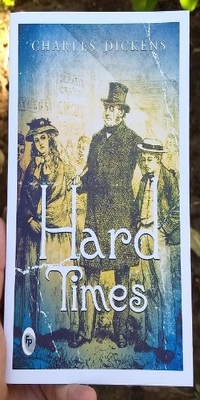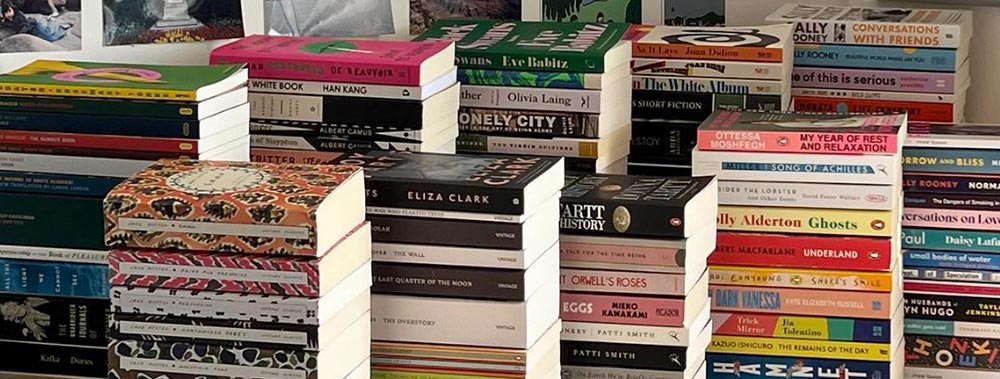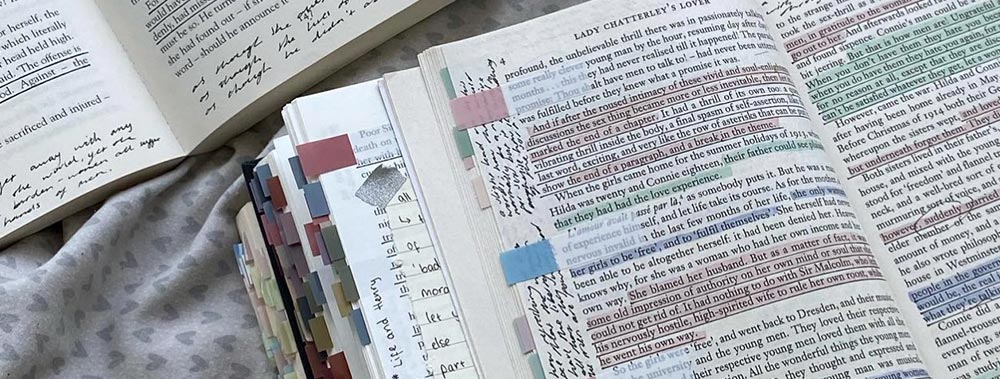Hard Times : Summary, Plot, Characters, Literary Analysis & More
“Hard Times,” a novel by Charles Dickens published in 1854, stands as one of Dickens’ seminal works. It is intricately woven with themes of industrialization, social class, and the human experience.
Set in the heart of an industrial city, it follows the lives of characters such as Stephen Blackpool, Josiah Bounderby, and Louisa Gradgrind.
The story delves into the struggles and complexities of a society driven by self-interest, as well as the clashes between imagination and utilitarianism.
As Dickens’ tenth novel, “Hard Times” explores the conflicts and challenges of a rapidly changing England, offering a poignant critique of its time.

Charles Dickens' 'Hard Times': Bleak industrial landscape, rigid utilitarianism, and human resilience, painted with Dickens' sharp social critique and vivid characters.
Table of Contents
Summary The Plot Characters Key Themes Genres Language used Literary devices Summing upThe Plot
The plot revolves around the clash between the rigid utilitarian philosophy, represented by Gradgrind and Bounderby, and the more humanistic values embodied by characters like Sissy Jupe.
As the story unfolds, characters face personal crises, including Louisa’s unhappy marriage to Bounderby, Tom Gradgrind’s descent into a life of crime, and the exposure of Bounderby’s false claims about his upbringing.
Ultimately, “Hard Times” explores the negative consequences of a purely rational and utilitarian approach to life, emphasizing the need for a balance between reason and compassion.
It serves as a critique of the dehumanizing effects of industrialization during the Victorian era, and the societal emphasis on materialism during Dickens’s time.
Characters
“Hard Times” by Charles Dickens introduces a cast of diverse characters including Thomas Gradgrind, Louisa, Tom, Bounderby, Stephen, and Harthouse, each emblematic of societal complexities.
James Harthouse
A charismatic and manipulative character, James Harthouse is introduced as a young man with a keen interest in Louisa Gradgrind.
He exploits her dissatisfaction in her marriage to Bounderby, attempting to seduce her and throwing her life into turmoil.
Thomas Gradgrind
A staunch advocate of utilitarian principles, Thomas Gradgrind is a rigid father who educates his children, Louisa and Tom, in the ways of factual knowledge, neglecting their emotional development.
His ideologies set the stage for the conflicts that unfold among the characters.
Tom Gradgrind
Louisa’s younger brother, Tom Gradgrind, is lured into a life of gambling and deceit, eventually leading to his downfall.
His choices reflect the struggle between the emotional and the rational that lies at the core of the story.
Louisa Gradgrind
Raised in an emotionally sterile environment, Louisa Gradgrind embodies the emotional toll of a life guided solely by facts.
Her ill-fated marriage to Josiah Bounderby and her subsequent connection with James Harthouse highlight the turmoil she experiences in pursuit of happiness.
Josiah Bounderby
A self-proclaimed “self-made man” and factory owner, Josiah Bounderby marries Louisa Gradgrind for his own convenience.
His harsh demeanor and inflated stories of his background paint a picture of the self-centered industrialist.
Stephen Blackpool
A compassionate and honest worker in Bounderby’s factory, Stephen Blackpool rejects Bounderby’s advances to join a union.
His principled decisions in the face of adversity make him a symbol of integrity amidst the moral decay of Coketown.
Key Themes
“Hard Times” delves into themes of industrialization, utilitarianism, and emotional deprivation.
The mechanized city of Coketown reflects the dehumanizing effects of industrialization.
Characters like Louisa, forced into a loveless marriage to Bounderby, exemplify the emotional emptiness resulting from utilitarian values.
Tom’s betrayal of Stephen Blackpool and Bounderby’s cold-hearted firing of him highlight the lack of compassion.
Sissy Jupe’s warmth and loyalty contrast the bleak landscape, providing a glimmer of hope for genuine human connection amidst these themes.
The Theme of Industrialization
Dickens vividly portrays the impact of the Industrial Revolution on society.
Coketown, the fictional setting of the novel, represents the dehumanizing effects of rapid industrialization.
The town is characterized by pollution, noise, and oppressive working conditions in factories.
The novel highlights the stark contrast between the wealthy industrialists like Bounderby and the impoverished factory workers.
It exposes the harsh exploitation of laborers and the economic disparities that emerged during this period.
Throughout the story, industrialization is associated with soulless mechanization and a loss of humanity, emphasizing the negative consequences of unchecked industrial progress.
The Theme of Utilitarianism
The philosophy of utilitarianism, which prioritizes practicality, facts, and self-interest over emotions and imagination, is a central theme.
Thomas Gradgrind embodies this philosophy and raises his children, Louisa and Tom, strictly according to these principles.
Gradgrind’s educational methods, which focus solely on facts and numbers, devalue the importance of emotions, creativity, and individuality.
This utilitarian approach is shown to have detrimental effects on the characters, leading to emotional repression, dissatisfaction, and moral corruption.
Dickens critiques the dehumanizing aspects of utilitarianism by demonstrating the emptiness and unhappiness it brings to those who adhere to it rigidly.
The Theme of Emotional Deprivation
The novel underscores the consequences of emotional deprivation caused by the strict adherence to utilitarian principles.
Characters like Louisa and Tom Gradgrind grow up devoid of warmth, empathy, and genuine human connections.
Louisa’s loveless marriage to Bounderby exemplifies emotional deprivation.
She marries him because it is considered practical and in line with utilitarian thinking, but she is emotionally unfulfilled and struggles with her lack of affection and happiness.
Sissy Jupe, in contrast, serves as a symbol of emotional richness and compassion.
Her character highlights the importance of nurturing emotional connections and the damaging effects of suppressing one’s feelings.
Genres in Hard Times
“Hard Times” primarily falls under the genres of social critique and Bildungsroman. As a social critique, Dickens scrutinizes the harmful consequences of the industrial revolution on society, revealing the stark realities of class disparities.
The Bildungsroman aspect follows the characters’ personal growth journeys. Louisa’s self-discovery and Sissy Jupe’s transformative influence on Gradgrind’s family contribute to the story’s emotional depth, bridging the gap between social commentary and individual development.
“Hard Times” by Charles Dickens falls into the following genres: social critique and Bildungsroman (a novel of personal development). Here’s an explanation of why it fits into these genres:
Social Critique
“Hard Times” is primarily a social critique novel that exposes and criticizes various aspects of Victorian society during the 19th century, particularly the negative consequences of industrialization and utilitarianism.
Dickens uses the novel to comment on the dehumanizing effects of industrialization, portraying the grim living and working conditions of the factory workers in Coketown.
The polluted and oppressive atmosphere of the town reflects the social and environmental problems arising from rapid industrialization.
The novel highlights the stark class divisions and economic disparities between the wealthy industrialists and the impoverished laborers.
Dickens criticizes the exploitation of the working class and the callousness of the upper classes.
Why “Hard Times” is a Bildungsroman
“Hard Times” also possesses elements of a Bildungsroman, a novel that focuses on the moral, psychological, and intellectual growth of a central character, typically from youth to adulthood.
The character of Louisa Gradgrind embodies the Bildungsroman element.
She undergoes a significant personal journey throughout the novel.
Raised in a utilitarian and emotionally deprived environment, she struggles to find meaning and fulfillment in her life.
Louisa’s development involves her realization of the limitations and drawbacks of the utilitarian philosophy that has governed her upbringing.
She grapples with her emotions, desires, and the consequences of her decisions, ultimately seeking personal growth and a more authentic way of living.
As the novel progresses, Louisa’s evolution towards self-discovery and a more balanced outlook on life aligns with the traditional Bildungsroman structure, where the protagonist undergoes a transformative journey.
Language used in Hard Times
Dickens employs a descriptive and emotionally charged language to evoke the atmosphere and emotions of “Hard Times.”
The visit of Tom to Stephen Blackpool portrays the stark contrast between their lives, highlighting the harshness of their world.
The marriage of Bounderby to Louisa is depicted with a cold and clinical tone, emphasizing the transactional nature of the union.
Through Mr. Gradgrind’s didactic speeches, Dickens uses language to underscore the impact of utilitarian ideology on characters’ lives, creating a poignant narrative that resonates with readers.
Literary devices in Hard Times
In “Hard Times,” Charles Dickens employs a tapestry of literary devices to enrich the narrative.
Through vivid imagery, he paints the industrial setting of Coketown, contrasting its mechanized nature with the characters’ struggles.
Symbolism, exemplified by Sissy Jupe’s innocence and Bounderby’s self-made persona, deepens the story’s meaning.
Dickens’ characterization, from the utilitarian Mr. Gradgrind to the morally grounded Stephen Blackpool, adds depth and resonance to the themes of industrialization and humanity’s emotional plight.
Similes
Throughout “Hard Times,” Dickens employs similes to amplify the reader’s connection to the narrative. Tom’s visit to Stephen is described as Tom standing “like a culprit” next to Stephen, vividly illustrating the contrast between their positions.
Louisa’s marriage to Bounderby is likened to a “compressed frigate,” revealing her sense of suffocation within the confines of that relationship.
Metaphors
Louisa’s union with Bounderby is metaphorically portrayed as “wedded to the casket,” symbolizing her emotional imprisonment.
Bounderby’s assertion of being a “self-made man” serves as a metaphor for his ego and fabricated backstory.
The circus, symbolizing imagination, stands as a metaphor for the liberating force within the constrained society of Coketown.
Analogies
The analogy of Bitzer as a “light-fingered filcher” reveals his cunning nature and lack of empathy, reflecting the dehumanizing impact of utilitarian education.
Sissy Jupe’s analogy of the ‘Fairy Child’ enlightens Gradgrind’s children about compassion and creativity.
By bridging abstract concepts with relatable comparisons, these analogies facilitate a deeper understanding of the novel’s underlying messages.
Imagery
Both Louisa and Tom, products of their father’s austere philosophy, find their father’s house devoid of emotional warmth.
The barrenness extends to Gradgrind’s institution, a school of mechanized minds, where the innocence of own children is sacrificed for utilitarian ideals.
The stark contrast is exemplified when Stephen refuses to join Bounderby’s bank, symbolizing his integrity in the face of moral compromise.
This imagery vividly captures the clash between humanity and industrialization, as exemplified in the teachings of Adam Smith.
Symbolism
Tom urging his sister to marry Bounderby represents sacrificing emotional fulfillment for material gain.
When Bounderby fires Tom, it embodies the harshness of industrial society. Sissy Jupe, an emblem of compassion and imagination, stands as a counterpoint to the soullessness surrounding her.
These symbols interweave with the narrative, underscoring the broader commentary on societal callousness, the pursuit of wealth, and the importance of human connection.
Personification
In “Hard Times,” Charles Dickens employs personification to infuse life into elements of the narrative.
Gradgrind’s school becomes a character itself, embodying the soulless pursuit of fact-based education.
Stone Lodge stands as an embodiment of the rigid mindset upheld within, reflecting the Gradgrind family’s demeanor. Gradgrind’s house is described as a “stony business-like place,” highlighting the family’s lack of emotional warmth.
As the story unfolds, Tom’s growth mirrors his character’s evolution, while the experiences of the Gradgrind children personify the broader societal consequences.
Hyperbole
As Tom grows, his indulgence in vices becomes a larger-than-life representation of moral decline. When Tom tells his sister about Bounderby’s invitation, his dramatized version escalates the tension.
The Gradgrind family’s extreme focus on utilitarianism exemplifies the exaggeration of a single-minded mindset. Sissy’s imagined scenario of a fairy tale-like wedding with Bounderby satirizes the reality of a factory worker marrying him.
The notion of Bounderby’s mother being thousands of years old amplifies his self-made narrative, and the opulent description of Bounderby’s house underlines his grandiosity.
Irony
As Louisa and Tom grow up in a factual education system, their emotional growth is stunted, creating situational irony.
The Gradgrind family is devotied to utilitarianism and that eventually leads to their emotional downfall, a form of dramatic irony.
Sissy marries a factory worker and that contradicts the fairy-tale-like life she once envisioned, employing irony to comment on unmet expectations. The naming of Old Hell Shaft with a darkly comic irony foreshadows the tragic events surrounding it.
Juxtaposition
The unhappy marriage of Louisa and Bounderby is juxtaposed with their opulent surroundings, underscoring their emotional void.
The bleakness of Bounderby’s mill is juxtaposed with the portrayal of the workers’ suffering, emphasizing the disparity between their labor and his profit.
The contrast between the gentle demeanor of Old Stephen and the harsh realities he faces emphasizes his resilience. Rachael wakes only to find Stephen gone starkly contrasts with the hopelessness of his fate.
Paradox
The stern façade of Bounderby’s housekeeper, an epitome of authority, paradoxically belies her vulnerabilities.
The seemingly harmless old woman who witnesses the bank robbery paradoxically holds power through her knowledge. Mrs. Gradgrind’s transformation from her rigid beliefs reveals the paradox of personal growth within a constrained society.
The decision to leave Coketown forever, contrary to Gradgrind’s principles, highlights the paradox of change amidst stagnation. These paradoxical instances engage readers by challenging conventional expectations.
Allusion
Sissy’s desire to join Mr. Sleary’s circus reflects a longing for freedom and imagination, contrasting the industrial reality.
The allure of London alludes to opportunities beyond Coketown’s confines. The circus performer, representing creative expression, contrasts with the constrained society.
The strange old woman, who helped Tom escape, symbolizes an enigmatic force guiding change.
Gradgrind’s shift towards nurturing imaginative pursuits alludes to a broader shift in values, adding depth to the story.
Allegory
Gradgrind’s decision to take the younger children symbolizes a shift towards nurturing emotional growth over strict fact-based education.
The exploration of political economy in the story allegorically reflects societal power dynamics. Bounderby’s wife, a symbol of his attempt to present a refined image, alludes to the gap between appearance and reality.
These allegorical components serve to extend the narrative beyond the immediate plot, encompassing broader themes and societal commentary.
Also, the phrase “Tom visit Stephen” operates as a microcosmic allegory for the broader themes. Tom’s visit to Stephen encapsulates the societal divide, illustrating the contrasting lives within the industrial landscape.
This interaction symbolizes the interaction between privilege and hardship, contributing to the novel’s overarching commentary on human worth and the effects of industrialization.
Ekphrasis
In the book ekphrasis is a subtle thread. Gradgrind’s transformation from a rigid educator to a nurturer of imagination is metaphorically described as a “child’s watering-place,” illustrating his shift towards fostering creativity.
Although sparing, this vivid description encapsulates the novel’s thematic essence of personal growth through imaginative expression.
Repetition
The frequent mention of Sissy Jupe invokes her compassionate presence amidst a cold world, emphasizing the value of empathy.
The motif of the father’s house recurs, symbolizing the emotional confines of Gradgrind’s rigid philosophy. This technique reinforces the novel’s core themes of humanity’s emotional needs in an industrialized society.
The repetition acts as a rhythmic refrain, amplifying the impact of the narrative’s messages on readers’ hearts and minds.
The Use of Dialogue
As Gradgrind takes in the essence of rational education, his conversations emphasize his utilitarian values, setting the tone for the story’s exploration of industrialism’s effects.
Discussions about London expose characters’ yearnings for a different world and societal aspirations.
These dialogues propel the narrative by unveiling characters’ motivations, illustrating thematic contrasts, and heightening tension, creating a multifaceted and immersive reading experience.
Parallelism
Parallelism contributes to the novel’s pacing and underscores character traits.
The mirrored experiences of Sissy and Louisa further highlight the choice between imagination and societal norms, enriching the message of individualism versus conformity.
Rhetorical Devices
Mr. Gradgrind’s rhetorical questions to his pupils challenge conventional thinking about the importance of the school.
The repeated question of “Why do you never marry?” directed at Sissy Jupe prompts thought about societal norms.
Rhetorical devices like these magnify key themes and encourage readers to critically assess the characters’ actions and society’s norms in the context of the novel.
Hard Times : FAQs
In this section, we address common queries about Charles Dickens’ thought-provoking novel.
Delve into explanations that illuminate its themes, characters, and literary techniques, enhancing your understanding of this timeless work.
What is the summary of Hard Times?
Hard Times” by Charles Dickens critiques industrialization and utilitarianism through the Gradgrind family’s story in the fictional town of Coketown. It explores the harsh realities of the Victorian era, focusing on the negative effects of strict adherence to rationality and materialism.
What is the main message of Hard Times?
The main message is the condemnation of the dehumanizing effects of industrialization and utilitarianism. It emphasizes the need for empathy, imagination, and a balance between reason and compassion. Dickens calls for a more humane and equitable society, highlighting the moral consequences of neglecting emotional well-being.
What is the significance of the ending of Hard Times?
The ending holds significance as characters like Louisa and Tom confront the consequences of their choices, hinting at the possibility of personal growth and emotional recovery. It suggests that individuals can break free from the confines of utilitarianism and rediscover their humanity.
What happens to Sissy at the end of Hard Times?
At the end, Sissy Jupe is left with the Gradgrinds, indicating her continued presence as a positive influence on the family. Her character symbolizes the potential for change and emotional growth in the Gradgrind household, offering hope for a more balanced and compassionate future.
What are the main themes explored in “Hard Times”?
“Hard Times” delves into themes such as industrialization’s impact on society, the conflict between rationalism and imagination, and the consequences of a utilitarian education.
Who are the central characters in the novel?
The central characters include Louisa Gradgrind, Tom Gradgrind, Sissy Jupe, and Mr. Thomas Gradgrind. They each embody different aspects of the societal struggles and transformations depicted in the story.
How does Dickens employ literary techniques in the novel?
Dickens utilizes vivid imagery to evoke emotions and symbolism to convey deeper meanings. He employs irony to underscore societal contradictions and employs dialogue to reveal character traits, themes, and tensions.
Summing up: Hard Times : Summary, Plot & More
As you can see from this “Hard Times” summary, Dickens creates a tapestry of characters and settings that intertwine to explore the effects of industrialization, utilitarianism, and emotional deprivation.
Through the transformation of characters like Louisa, Tom, and Sissy Jupe, the novel captures the complexities of human nature and societal struggles.
The meticulous use of literary devices such as symbolism, irony, and allegory adds depth to the narrative, fostering reflection on themes that resonate beyond the pages.
Dickens’ masterful portrayal of the era’s stark contrasts, delivered through rich imagery and potent dialogue, vividly illustrates the harsh realities of a society driven by mechanization.
“Hard Times” stands not only as a poignant social critique but also as a timeless exploration of the human spirit’s resilience against an unforgiving world.
Its multifaceted narrative continues to captivate readers, urging them to contemplate the interplay between individual aspirations and societal demands.
Other Notable Works by Charles Dickens
If you are interested in Hard Times, you may be interested in other works by Charles Dickens including:
- “Great Expectations“: Follow the transformative journey of Pip, a young orphan, through social class complexities and the enigmatic figure of Miss Havisham.
- “A Tale of Two Cities“: Set against the backdrop of the French Revolution, this novel explores the themes of sacrifice, resurrection, and the stark dichotomy between London and Paris.
- “Oliver Twist“: Unveil the harsh realities of Victorian England through the orphaned Oliver, navigating the treacherous world of workhouses and crime.
- “David Copperfield“: Often considered semi-autobiographical, this novel chronicles the life of David Copperfield as he navigates personal growth and societal challenges.
- “Bleak House“: Delve into a web of intricate relationships and legal complexities as Esther Summerson unravels the mysteries surrounding her past.
- “A Christmas Carol“: “A Christmas Carol” follows miserly Ebenezer Scrooge’s transformative journey through visits by ghosts, leading to his redemption and generosity.
Each of these works encapsulates Dickens’ skill in depicting social issues, complex characters, and intricate narratives that continue to resonate with readers today.







